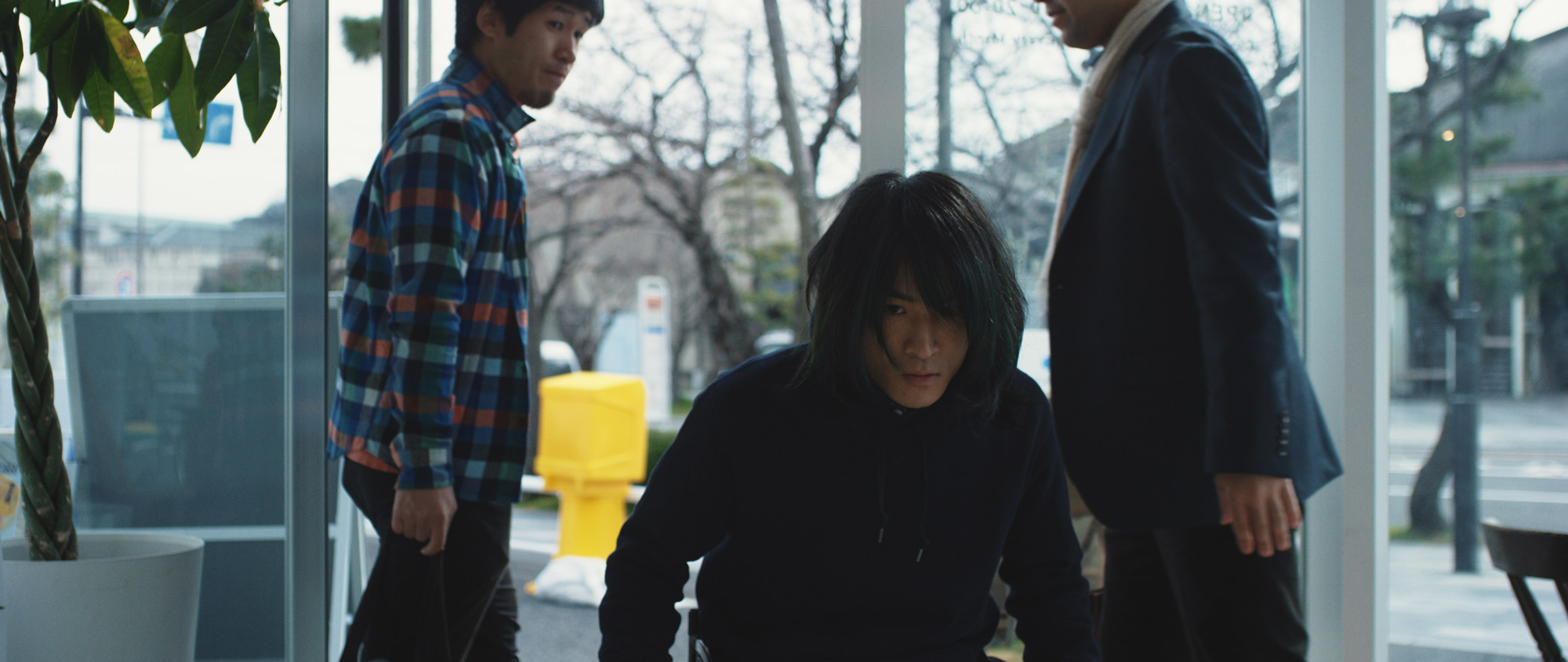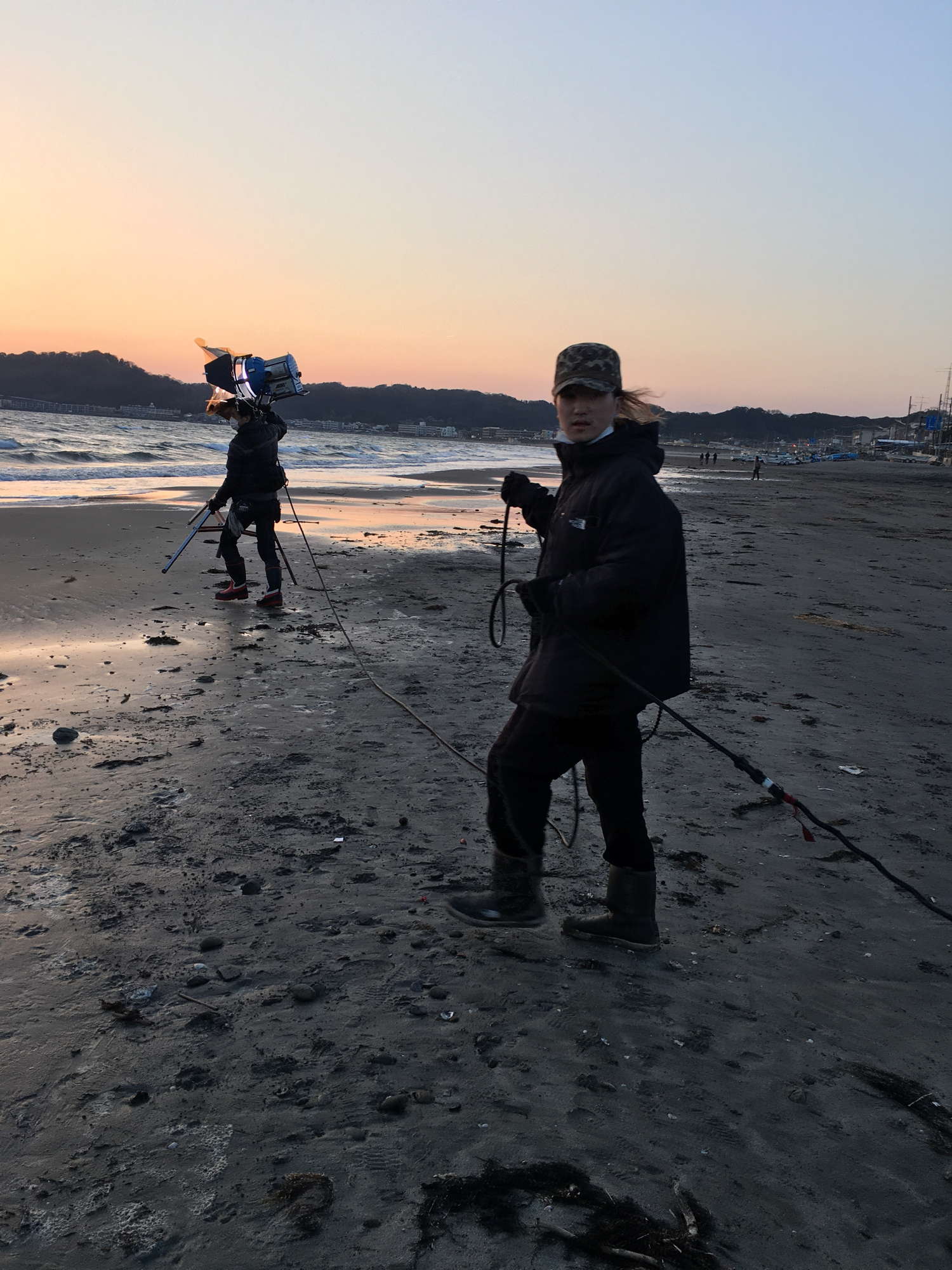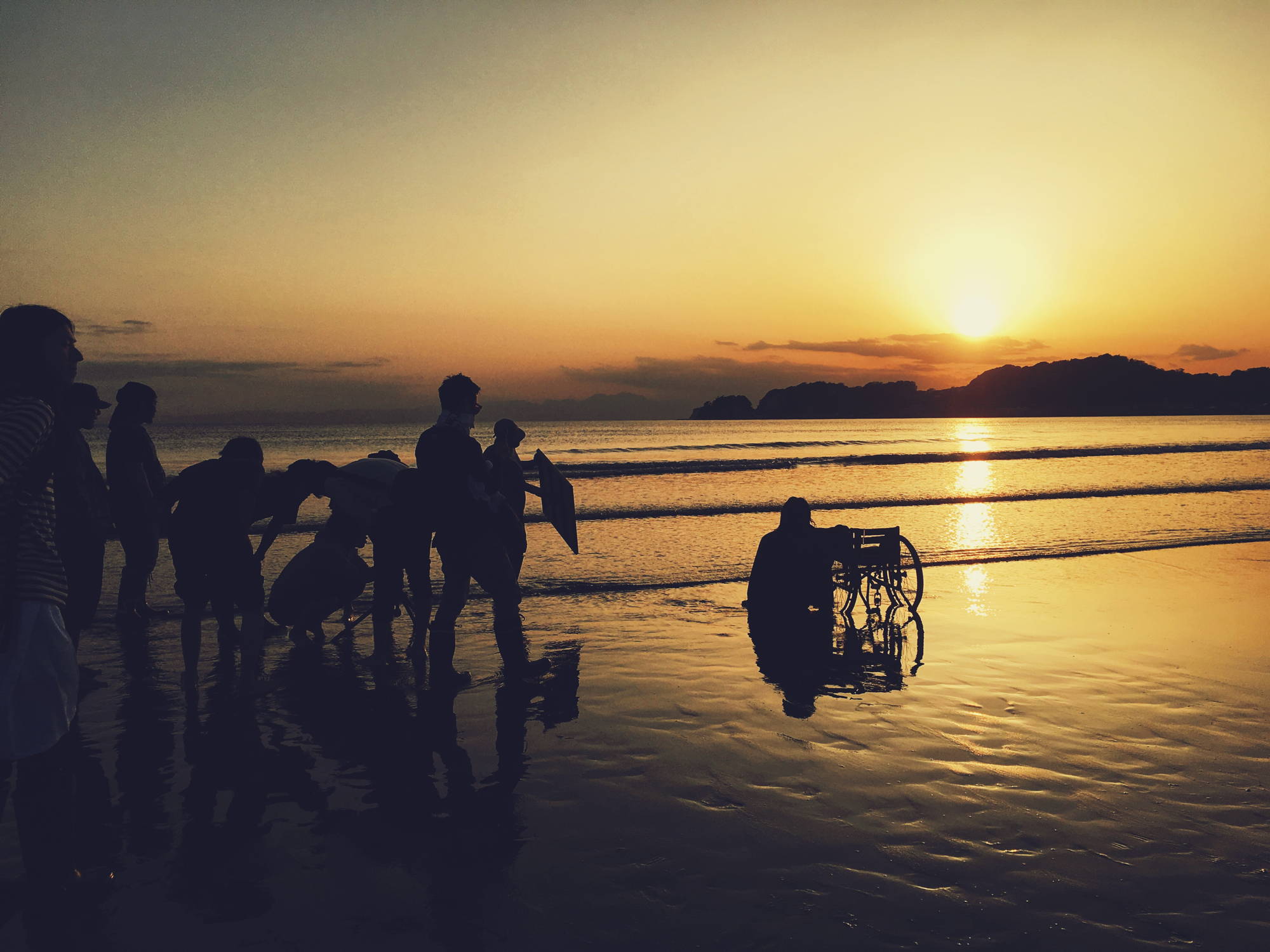
Created in anticipation of Japan’s 2020 Olympics and Paralympics games, Yasuhiro Tamura’s kinetic short Wheelchair Dance sees its mobility impaired protagonist spiritually break free of the confines of his chair in a challenge to the concept of love bequeathed on the deserving and the illusion that determined endeavour undoubtably leads to reward. We spoke to Yasuhiro about the difficulties of independent film production in Japan and his desire to share an appreciation of wheelchair dance as a sport and creative art form of expression in its own right.
You recently founded production company EXIT FILM, are there particular types of projects which fit the company’s sensibilities?
Since 2015 we have been working with artists and creatives from many different fields including web designers, still photographers and musicians to produce collaborative portfolio work. KUROKAWA WONDERLAND, a project we completed in 2015, treats the themes of low-birth rates, an ageing population and the subsequent withering of regional cultures and histories in Japan and attempts to open source information regarding the area’s practices and traditions. With Wheelchair Dance we hoped to carry on in the same vein and pick up on issues such as the objectivization of people with disabilities in the media, a practice Stella Young describes as ‘inspiration pornography’, discussions surrounding diversity and the way in which small media production companies such as ourselves can be involved in the Tokyo 2020 Olympic and Paralympic games.
How did you first discover wheelchair dancing and then decide to build a short film around the practice? In what ways was this film crafted in reaction to the forthcoming 2020 Tokyo Olympics and Paralympics?
I have been eager to use contemporary dance in film ever since seeing Wim Wender’s Pina. With that in mind, last year when I began to become involved in projects which were aiming at bringing a fresh angle to entertainment that marries societal issues and art I thought I would like to do something similar with contemporary dance. Ultimately I came to the idea of a piece involving wheelchair dance. I wanted to find some ‘cool’ videos featuring wheelchair dancing but there were very few visible and when I sought to get in contact with a wheelchair dance group here in Japan they weren’t interested. So, it was basically up to me to make the film exactly as I wanted – something energetic and lively.
I am tired of seeing stories where someone with a disability fights on, refusing to be discouraged and as a result attains happiness.
I think it is fair to say that the 2020 Tokyo Olympics is increasingly becoming a closed-shop as far as media goes. I have been fortunate enough, through work I have carried out with the London Olympic Cultural Olympiad Committee, to be involved in many different projects which left a strong impression on me. Unfortunately however, the way it stands it seems decision making powers regarding the Tokyo Olympics is firmly in the hands of the large government-backed ad agencies. My frustration at not being able to be involved in such a large-scale event is another motivation for making Wheelchair Dance.

Were you at all conflicted about casting able-bodied dancer Daisuke Omiya (who also choreographed the film) in this role?
I did hesitate slightly at casting Daisuke for the role but I think it would be a good thing if his involvement stimulated discussion and brings to the surface a topic that tends not to be talked about much. I think being able to take full responsibility of a project in this way is one of independent filmmaking’s best qualities. I felt it was important that the film be made as a piece of entertainment and as Daisuke has enjoyed success around the world as a professional dancer I felt he was the best choice. The quality of film addressing social issues in Japan is typically low and often they suffer from a lack communication between the filmmakers, agencies and those directly affected by the issue at hand. Furthermore, filmmakers are often low down the pecking-order on set. For this reason we wanted to take the project by the scruff of the neck from the beginning and, under the supervision of a wheelchair user, ensure the piece’s quality and help shape the future of wheelchair dance. Bearing all the responsibility for this project was a great source of confidence for me.
What informed your decision to shoot Wheelchair Dance on the RED EPIC DRAGON?
Well, the biggest reason for my choice to use the RED EPIC DRAGON is simply that I own one. When I first went solo in filmmaking, shooting movies with SLRs was becoming very popular so it was an easy camera to get used to. As the RED and MOVI used in this film are my personal possessions the idea of using them up to my waist in sea water was a bit daunting but the reason why I ultimately did so is due to the poor state of Japanese independent filmmaking. I want to change the way things are here and that is one reason why I decided to use a high-spec camera.









Very few films depict protagonists with a disabilities in a positive light, and especially not displaying such physical power as in this short. Having achieved that what thoughts and feelings do you want your audience to take away?
At first there were other ideas for the film’s ending, including one where the protagonist stands up and hurls his chair into the air. In this case the story would have been that the protagonist is someone who would stake his life on a minority sport such as wheelchair dance. What I wanted to say is that when I first thought to make a piece that would bring attention to wheelchair dance as a genre and Paralympic sport the audience is only interested in whether the contents is worthy of entertainment and quality. In this respect, whether it be Paralympic sport or wheelchair dance maintaining the quality of the competitive element through regulation is important in protecting the value of the sport’s spectacle as entertainment. And in Wheelchair Dance’s case I wanted to show that when comparing wheelchair dance and and traditional dance styles people might legitimately say, “Wheelchair dance is better, this is a victory for wheelchair dance.” I think exposure to this way of thinking can help get people excited about the Paralympics. I also wanted to add the facet that this victory in itself does not necessary lead to happiness. I am tired of seeing stories where someone with a disability fights on, refusing to be discouraged and as a result attains happiness. I wanted to do-away with the idea that disabled people are simply good people and acknowledge that sometimes however one might fight against hardship things may not go the way one would hope and from that stems feelings of sadness and envy. This idea was central to my thinking when making the film.
What future projects do you have planned?
At the moment there aren’t many places for films coming out of the Japanese independent scene to be critiqued, especially films that are aimed at an international audience, so I hope to be involved in creating some kind space where young directors can show off their work. I also would like to continue to be involved in work with musicians, dancers and web designers. However, given the state of Japanese independent filmmaking, I think we will have to look past the traditional domestic cinema release. With that it mind I would like to offer my sincere gratitude for your taking an interest in my work. I intend to push on with new projects and I look forward to sharing them with you in the future.



Very nice job, regards from México City
Glad you enjoyed it Alex.